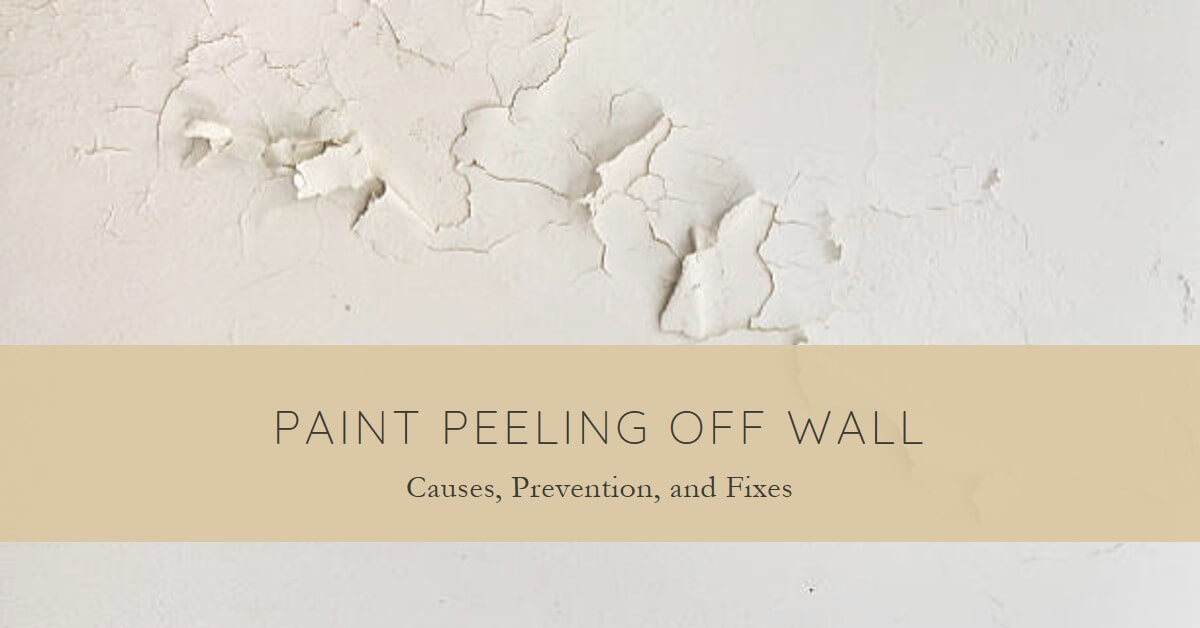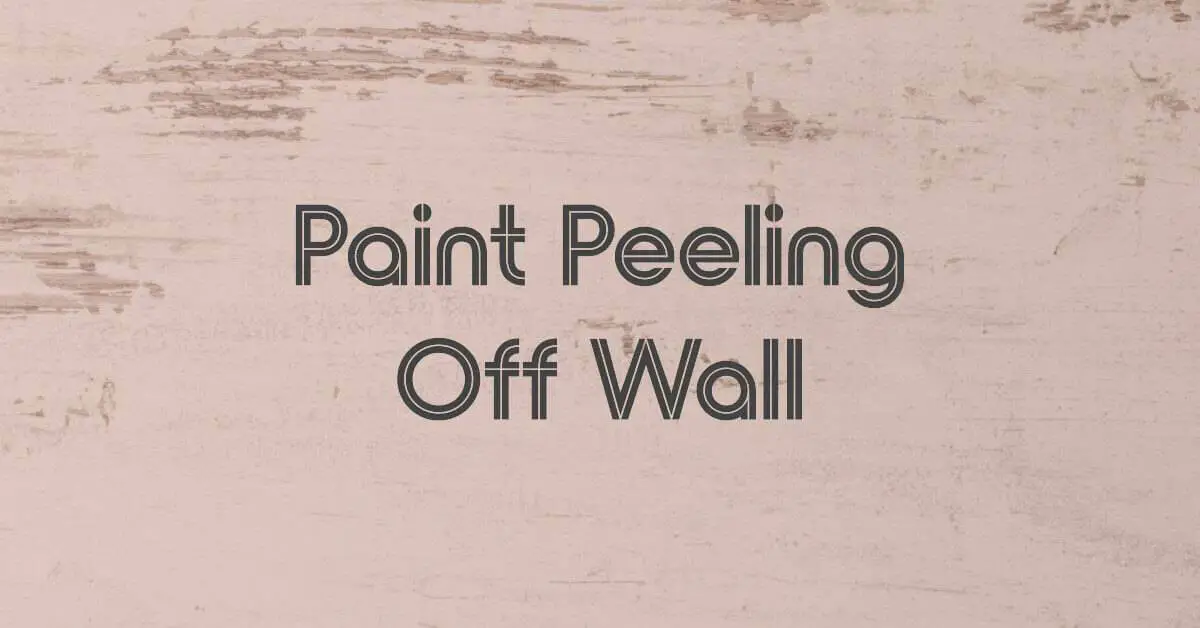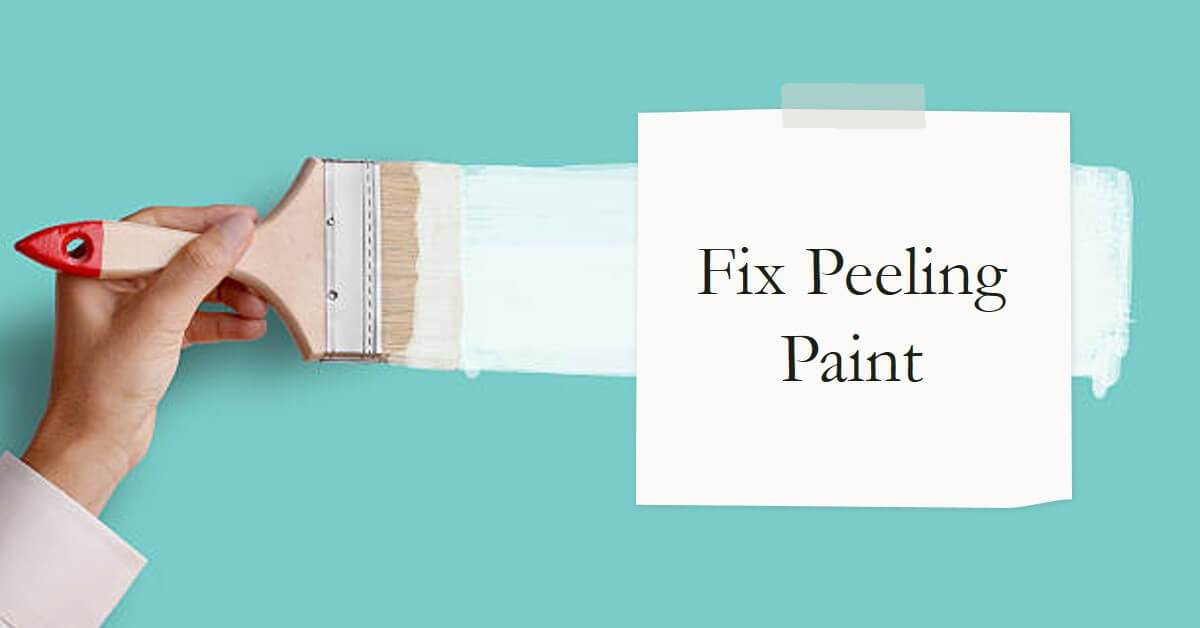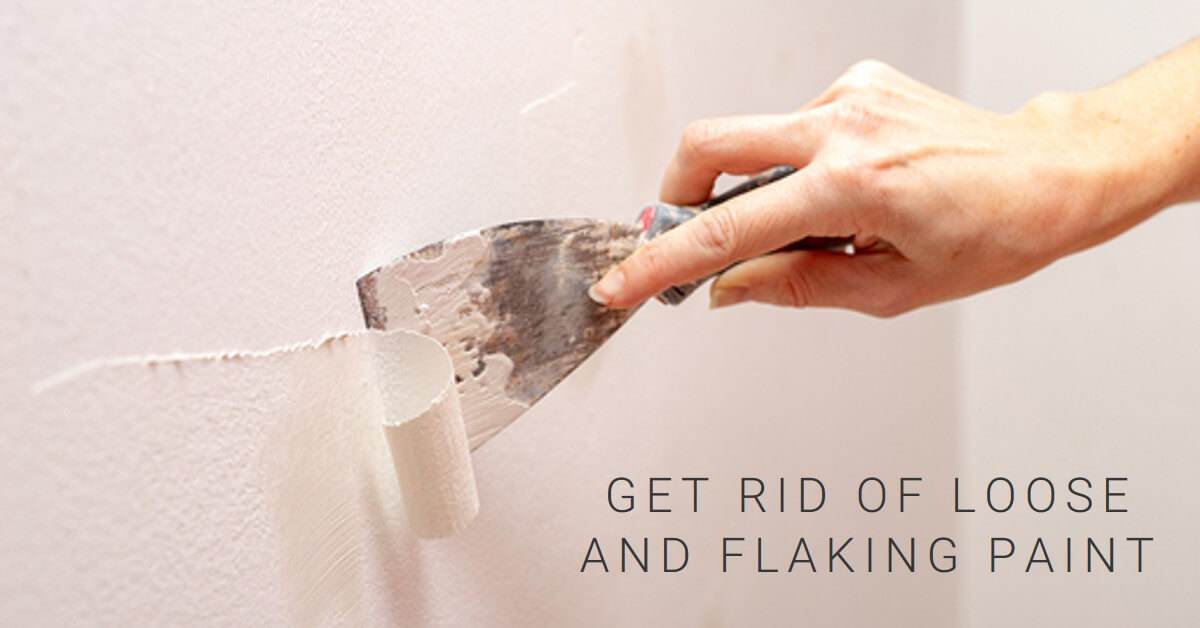Paint Peeling Off Wall – Have you ever noticed the unsightly sight of paint peeling off your walls? It can be frustrating and can make your otherwise beautiful space look neglected and worn out.
In this article, we will explore the causes of paint peeling, signs to look out for, prevention tips, steps to fix the issue, and when it’s time to call in the professionals.
Paint peeling off the wall is a common issue that many homeowners face. Whether you have a newly painted wall or one that has been standing for years, paint peeling can occur due to various reasons.
Understanding the underlying causes and taking appropriate preventive measures can help you maintain the integrity and aesthetics of your walls.
Understanding the Causes of Paint Peeling

Moisture and Water Damage
One of the primary culprits behind paint peeling is moisture and water damage.
When walls are exposed to excessive moisture, such as from leaks, condensation, or high humidity, it can penetrate the paint film, causing it to bubble, blister, and eventually peel off.
Poor Surface Preparation
Another common cause of paint peeling is poor surface preparation.
If the surface was not adequately cleaned, sanded, or primed before applying the paint, the adhesion between the paint and the wall may be compromised, leading to peeling.
Low-Quality Paint or Application
Using low-quality paint or applying it incorrectly can also result in paint peeling. Inferior paint may not adhere well to the surface or may not withstand environmental factors.
Similarly, if the paint was applied too thinly or in multiple coats without proper drying time, it can lead to premature peeling.
Age and Wear
As paint ages, it naturally deteriorates, and signs of wear become more apparent.
Over time, the paint film may become brittle, lose its elasticity, and start peeling away from the wall.
Exposure to sunlight, temperature fluctuations, and everyday wear and tear can accelerate this process.
Signs and Symptoms of Paint Peeling

To identify paint peeling issues early on, it’s important to know the signs and symptoms to look out for.
Blisters and Bubbles
When paint begins to peel, it often forms blisters or bubbles on the surface. These raised areas are indications that the paint film is detaching from the wall.
If left unaddressed, the blisters can burst, leading to more extensive peeling.
Cracking and Flaking
Cracks and flakes in the paint are common signs of peeling. As the adhesion weakens, the paint film starts to crack and separate from the wall, resulting in visible flakes.
The size and severity of the cracks can vary, from small hairline cracks to larger sections of flaking paint.
Read Also:
How to Clean Flat Paint Walls Like a Pro
Peeling in Specific Areas
Paint peeling doesn’t always occur uniformly on the wall. It can be localized to specific areas, such as near windows, doors, or in places exposed to moisture.
Understanding the pattern of peeling can provide clues about the underlying cause.
Prevention and Maintenance Tips
Taking proactive measures to prevent paint peeling can save you time, effort, and money in the long run. Here are some prevention and maintenance tips to keep your walls in top condition:
Proper Surface Preparation
Before painting, ensure that the surface is clean, dry, and free from dust, grease, and other contaminants. Sand rough areas and apply a suitable primer to enhance adhesion.
Proper surface preparation creates a solid foundation for the paint to adhere to, reducing the chances of peeling.
Choosing Quality Paint and Materials
Investing in high-quality paint and materials can significantly reduce the likelihood of paint peeling.
Quality paint formulations offer better adhesion, durability, and resistance to moisture.
Using the right tools and applicators can ensure an even and smooth application.
Regular Inspection and Maintenance
Regularly inspecting your walls for any signs of damage or wear can help you catch paint peeling issues early on.
Address any underlying causes promptly, such as fixing leaks or improving ventilation, to prevent further damage.
Perform routine maintenance, such as cleaning and touch-ups, to extend the life of your paint job.
Addressing Moisture Issues
Since moisture is a common culprit behind paint peeling, it’s crucial to identify and address any sources of excess moisture.
Fix plumbing leaks, improve insulation, and ensure proper ventilation in areas prone to moisture, such as bathrooms and kitchens. Controlling humidity levels can go a long way in preventing paint peeling.
Read Also:
Steps to Fix Peeling Paint

If you’re dealing with paint peeling issues, here are the steps you can follow to fix the problem:
Gather the Necessary Tools and Materials
Before starting the repair process, gather the required tools and materials.
These may include a scraper, sandpaper, putty knife, patching compound, primer, paintbrushes, and high-quality paint matching your existing color.
Remove Loose and Flaking Paint

Carefully scrape off the loose and flaking paint using a scraper or putty knife.
Be cautious not to damage the underlying wall surface. Sand the area to smoothen any rough edges or remaining paint residue.
Repair Any Damaged Surfaces
Inspect the wall for any damaged or compromised areas. Fill in cracks, holes, or gaps with a suitable patching compound or spackle. Smooth the repaired areas and allow them to dry completely before proceeding.
Prime and Repaint
Apply a high-quality primer to the repaired areas and let it dry according to the manufacturer’s instructions.
Once the primer is dry, apply two coats of paint, ensuring each coat is fully dry before applying the next.
Use even brush strokes for a seamless finish.
Hiring Professionals for Paint Peeling Issues
While some paint peeling problems can be resolved through DIY methods, there are situations where professional help may be necessary.
When to Consider Professional Help
If the paint peeling is extensive, covers large areas, or recurs despite your efforts, it may be time to seek professional assistance.
Professional painters have the expertise, tools, and knowledge to handle complex paint-peeling issues and provide long-lasting solutions.
Choosing the Right Painting Contractor
When hiring professionals, do thorough research to find a reputable painting contractor. Look for recommendations, read reviews, and ask for references.
Ensure the contractor is licensed, insured, and experienced in dealing with paint peeling problems specifically.
Read Also:
DIY Wall Painting Design Ideas
Conclusion
Paint peeling off the wall can be a frustrating and unsightly problem.
By understanding the causes, signs, prevention methods, and appropriate repair techniques, you can tackle paint peeling effectively.
Remember to prioritize proper surface preparation, choose quality materials, and address underlying moisture issues. When in doubt, consult professionals who can provide expert guidance and solutions tailored to your specific situation.









